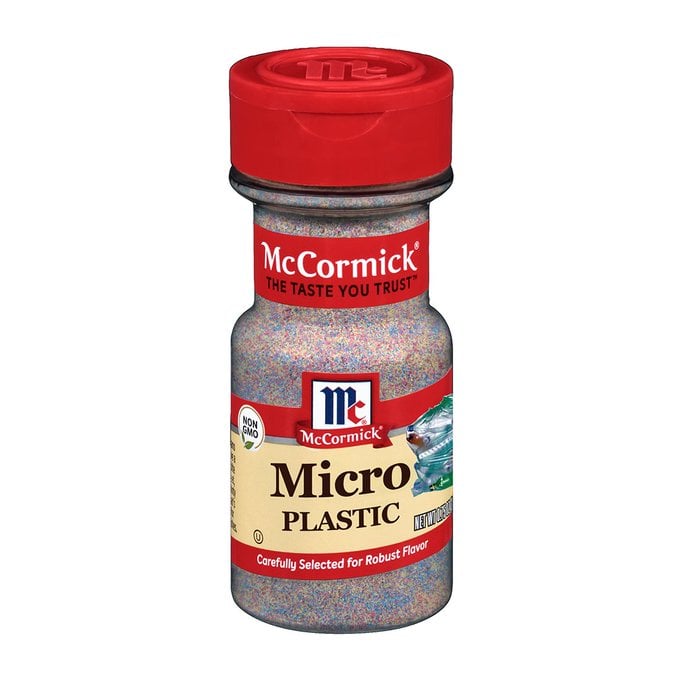I’m trying to resolve an argument.
EDIT: Yes, you can. But you can’t digest it. The only edible parts of a tree are some specific types of tree bark. Thanks, everyone!
Saw dust have been mixed with flour multiple time in history during famine period. However it was mostly done to increase profit, not for its nutritional value and multiple bakers have been killed by angry mob because of that.
So while eating wood may not kill you, serving it could?
See also: Bark bread, aka “pettuleipä” in Finnish
William Osman and crew attempted to find the breaking point on this in his video “How Much Sawdust Can You Put In A Rice Crispy?”
Sure you can but you probably shouldn’t…
Wood is mostly cellulose and lignin, which holds no nutritional value to us humans. Another comment said that termites have certain enzymes which digest it, but it’s actually the bacteria in their guts which break down the woody fibres so they can turn it into glucose. So, theoretically, maybe we could isolate those bacteria and somehow incorporate them into our guts too? I mean it probably wouldn’t work, but you never know until you try right?
That’s interesting in that it’s the termites’ gut flora that break down the woody content they ingest, considering that a mycelial presence is required to convert grassland to forest as the bacteria present in soil are unable to process the dendritic xylem in order for reuse in the substrate. Do you know if these termite bacteria are viable alternatives to fungal synthesis in reforestation projects?
Did you ever find an answer to this re: reforestation projects? Could be useful to relocate termites in order to introduce the microbes to grasslands.
Your mom is mostly lignin.
lignin ma ballz
So there is a future, where us humain, go to the restaurant and open the Wood card, and a waiter specialized in wood (certainly french too) will go, Hello, Monsieur, Madame, have you chozen your wood for tonight And our grand kids will respond: “Yes, We will take the Cypress of Bordeaux” And this wonderful french waiter will respond "Very Good Choice with a Fish Sir, It creates a wonderfool Surf and Turf taste
Bon appetit!
Your mind is an enigma.
So you’re saying if I eat enough termites I can gain their power?
That’s a question for an anteater. Of course, it may need to ingest something with the power of speech before it can say.
Removed by mod
Does bamboo count? It’s a common wood flooring and cutting board option. Lots of furniture is made from it. It’s used like wood, even though it doesn’t grow quite the same as a normal tree. And people have been eating bamboo shoots for a long time.
if you are a beaver Lol
You can eat anything if you’re brave enough
I know a guy that once ate an entire sandwich from Arby’s. How he’s not dead, I’ll never know.
I once ate a burrito that was free if you could finish in one sitting, it was 6lb. It weighed around the same as my first child when he was born.
For the first few hours of his life, all I was thinking was “how the fuck did I eat something the same weight as you”
Maybe because it was free and you were hungry; who wouldn’t love a burrito for free?
This guy Jesse on Alone Season 5 was running out of food and had read about native tribes creating bread from tree bark, so he stripped some off a pine tree and ate it. It seemed edible but hard to pass. The video shows the aftermath, basically he had to tap out and be rescued due to severe abdominal pain. However, apparently it is a thing, I’m not sure how you could do it in a way your stomach can handle though, and most likely it has to be specific species of trees.
You shouldn’t eat anything from a pine tree. Or even cook with pine wood. You might be able to eat bark from some other type of tree, but pine is toxic.
This simply isn’t true at all and I have no idea why you would even make that up. Pine is the most diverse family of conifers with over 800 different species, many of which are used in a variety of cuisine and teas. I’ve been chewing on white pine needles all my life as they’re known to be rich in vitamins and help reduce dehydration.
Then there’s the fact that almost all species of pine produce edible nuts. The species that produce the largest nuts are cultivated for commercial sale which is why you can find pine nuts in high end grocery stores and fine cuisine.
They’re probably thinking of treated pine. Fairly common construction material, and toxic to cook with because of the things it is treated with, like arsenic, to make it a better, longer-lasting construction material.
In fact, spruce tips are a fantastic source of vitamin C and one of the main reasons why scurvy is historically all but unknown in indigenous populations in regions where spruce thrive (which is damn near everywhere). Furthermore, spruce tips have also been added to beer during brewing, and made into tinctures, bitters, etc. for thousands of years. There are very few conifers that are unwise to harvest from, and most of them have flat/fanned needle sprays, so they’re easy to avoid. 🤘🏼🤓
Spruce isn’t pine. So now I question whether those replying know the difference between a pine tree and a conifer. They’re not all the same.
Because I’ve been told by every single scout master and naturalist my entire life that pine resin is toxic and not to eat pine needles, cones or bark or to use pine wood in a cooking fire.
They were always referring to a singular type of tree. Not the entire family Pinaceae. If that tree has another name, I don’t know it.
Yes, and you probably have unknowingly eaten it.
https://www.bonappetit.com/entertaining-style/trends-news/article/parmesan-wood-pulp-cellulose
Wood has no nutritional value to humans, but a few things come close:
The center of banana tree trunks are cooked and eaten, and a common parts of some asian dishes, but they aren’t really “wood”.
The inner part of tree bark is digestible by humans, but it is not classified as “wood” either.
You can ingest it, but you can’t digest it and it won’t provide much if any nutrition. It’ll probably make you constipated though.
So a good suggestion for the no-poop three days challenge !
The real question is “Can a woodchuck Norris?”
Cinnamon is tree bark.
i remember reading about how in some parts of the world (north America?) they used to process the wood of some trees to use as flour.
Humans do eat anything, I think the question should rather be "Can eating wood be nutritive or pleasant (or ethical 🤷)? "
Oh right, I just remembered that Norway did make something like “bark bread” in the past during famines, and that linked Wikipedia article says:
The inner bark is the only part of a tree trunk that is actually edible; the remaining bark and wood is made up of cellulose, which most animals, including humans, cannot digest.
I just got started testing Google Bard, so I fed this question to it and got this reply:
No, humans cannot eat wood. Wood is made of cellulose, which is a type of fiber that is not digestible by humans. If you eat wood, it will pass through your digestive system without being absorbed. In some cases, eating wood can cause blockages in the digestive tract, which can be dangerous.
There are some animals that can eat wood, such as termites and beavers. These animals have special enzymes that help them to digest cellulose. Humans do not have these enzymes, so we cannot eat wood without getting sick.
So what you are saying is, we just need to put wood and beaver enzymes in a blender…
Bard is wrong. Look at any vitamin/supplement type pill bottle. Cellulose is listed in almost every one.
I looked up cellulose and it does say that it is used in some drugs and other consumables yeah, but it’s still indigestible, so it wouldn’t give you any nutrients to survive if eaten by itself, I guess.
What about those dried wood snacks?
dried wood snacks?
I have never heard of this and I can’t find anything online.
Got a link?
https://www.healthline.com/nutrition/oak-bark
Ohh, so it seems like bark is edible but wood isn’t. Definitely chimes with other answers above.
I think our dude’s been eating potpouri.
Bard says “we” cannot eat wood… OK Bard, then try a Cheeseburger.















